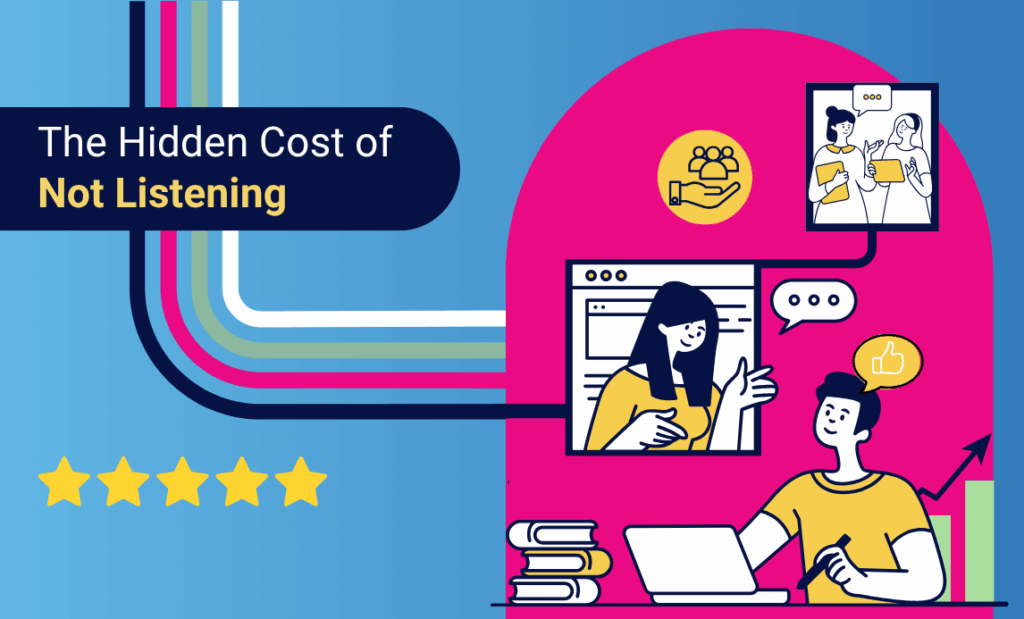“You have a customer who stopped buying from you last month.
You’ll never know why.
You never asked.”
That line hit me like a punch in the gut. Because it’s true — and it’s happening every single day in businesses around the world.
We pour millions into marketing, sales funnels, and tech stacks. But when it comes to asking, “Hey, how was your experience?” — we either whisper it once a year or don’t ask at all.
And even if we do ask… we rarely listen.
“We Ran a Survey Once. Nothing Happened.”
That’s what a stakeholder told me recently.
And honestly? That’s the core of the problem.
Customer feedback — CSATs, NPS scores, open comments, voice notes — isn’t magic dust you sprinkle and hope for gold. It’s a muscle. If you don’t train it, if you don’t act on what it tells you, it atrophies.
And so many companies treat it like a one-time checkbox on a project plan:
- “We sent a survey.”
- “Nobody replied.”
- “See? Customers don’t care.”
But here’s what they’re missing…
Listening Is a Strategy, Not a Survey
Let’s be real.
Most businesses think they know their customers.
- “We already know what people want.”
- “If it’s a big issue, they’ll complain.”
But 91% of unhappy customers don’t complain — they just leave. Quietly.
You don’t even know you lost them until it shows up in a quarterly dip.
Here’s the kicker: the ones who do speak up? They’re doing you a favor.
A gift, actually.
They’re showing you the hole in the ship before it sinks.
The Real Business Cost of Not Listening
Let’s break it down.
| Not Listening | Business Impact |
| Customers silently churn | Lost lifetime revenue |
| Bad experiences go unnoticed | Damaged brand trust |
| Teams make decisions without real input | Product-market misfit |
| No closed-loop process | Lost operational efficiency |
Organizations that adopt continuous customer feedback systems often experience meaningful improvements in retention, satisfaction, and operational efficiency. For example:
- Some firms report double-digit declines in churn after listening and reacting to customer feedback
- Many see measurable lifts in NPS, referral activity, and loyalty metrics
- Faster failure recovery and closed-loop follow-ups help reduce support costs and rework
Insights from ongoing feedback lead to more aligned product roadmaps based on real pain points rather than assumptions
“But We’re Too Busy”
I get it.
Teams are stretched. Everyone’s racing to meet OKRs, launch features, win clients.
But not listening to your customers is like building a house while ignoring the people yelling that the foundation’s cracking.
It doesn’t matter how fast you move if you’re heading in the wrong direction.
What Listening Actually Looks Like
It’s not just sending a form.
It’s about creating a system that listens, learns, and acts:
- Asking for feedback at the right time (not 3 weeks later).
- Routing negative responses directly to the teams who can fix them.
- Celebrating your happiest customers and encouraging referrals.
- Surfacing trends so you’re acting on insights — not assumptions.
Listening = operationalized empathy.
That’s where the magic happens.
Closing Mic-Drop
“Your competitors aren’t stealing your customers.
Your silence is.”
If you’re a founder, a CX lead, a product owner, or just someone who cares about your users — now is the time.
Build a system that listens.
Not just to check a box, but to learn, act, and grow.
Your customers are already talking.
The question is: are you really listening?
Want Help Getting Started?
If you’re wondering how to move from one-off surveys to a feedback system that drives real change — reach out. I’d love to share what’s worked (and failed) in the real world.
Explore Emojot’s Customer Experience Management solution and start listening smarter.
-An article by Salman Faraj, Solutions Engineer at Emojot

